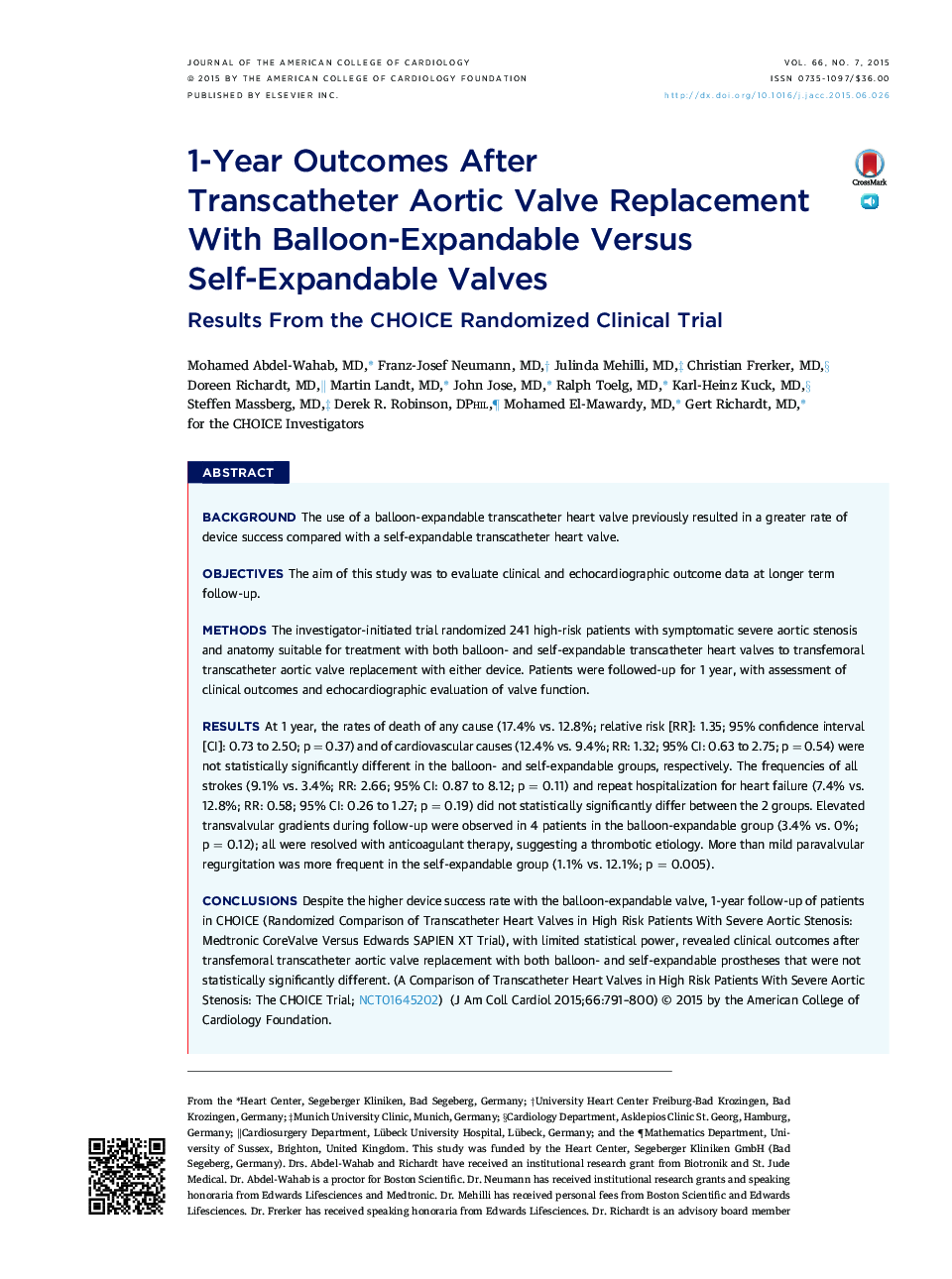| کد مقاله | کد نشریه | سال انتشار | مقاله انگلیسی | نسخه تمام متن |
|---|---|---|---|---|
| 5982476 | 1577035 | 2015 | 10 صفحه PDF | دانلود رایگان |

BackgroundThe use of a balloon-expandable transcatheter heart valve previously resulted in a greater rate of device success compared with a self-expandable transcatheter heart valve.ObjectivesThe aim of this study was to evaluate clinical and echocardiographic outcome data at longer term follow-up.MethodsThe investigator-initiated trial randomized 241 high-risk patients with symptomatic severe aortic stenosis and anatomy suitable for treatment with both balloon- and self-expandable transcatheter heart valves to transfemoral transcatheter aortic valve replacement with either device. Patients were followed-up for 1 year, with assessment of clinical outcomes and echocardiographic evaluation of valve function.ResultsAt 1 year, the rates of death of any cause (17.4% vs. 12.8%; relative risk [RR]: 1.35; 95% confidence interval [CI]: 0.73 to 2.50; p = 0.37) and of cardiovascular causes (12.4% vs. 9.4%; RR: 1.32; 95% CI: 0.63 to 2.75; p = 0.54) were not statistically significantly different in the balloon- and self-expandable groups, respectively. The frequencies of all strokes (9.1% vs. 3.4%; RR: 2.66; 95% CI: 0.87 to 8.12; p = 0.11) and repeat hospitalization for heart failure (7.4% vs. 12.8%; RR: 0.58; 95% CI: 0.26 to 1.27; p = 0.19) did not statistically significantly differ between the 2 groups. Elevated transvalvular gradients during follow-up were observed in 4 patients in the balloon-expandable group (3.4% vs. 0%; p = 0.12); all were resolved with anticoagulant therapy, suggesting a thrombotic etiology. More than mild paravalvular regurgitation was more frequent in the self-expandable group (1.1% vs. 12.1%; p = 0.005).ConclusionsDespite the higher device success rate with the balloon-expandable valve, 1-year follow-up of patients in CHOICE (Randomized Comparison of Transcatheter Heart Valves in High Risk Patients With Severe Aortic Stenosis: Medtronic CoreValve Versus Edwards SAPIEN XT Trial), with limited statistical power, revealed clinical outcomes after transfemoral transcatheter aortic valve replacement with both balloon- and self-expandable prostheses that were not statistically significantly different. (A Comparison of Transcatheter Heart Valves in High Risk Patients With Severe Aortic Stenosis: The CHOICE Trial; NCT01645202)
Journal: Journal of the American College of Cardiology - Volume 66, Issue 7, 18 August 2015, Pages 791-800